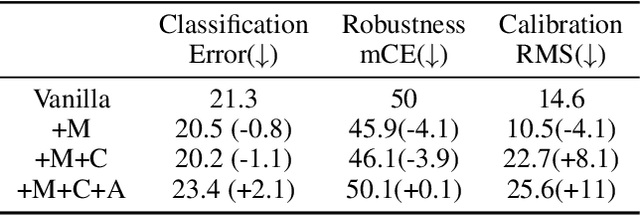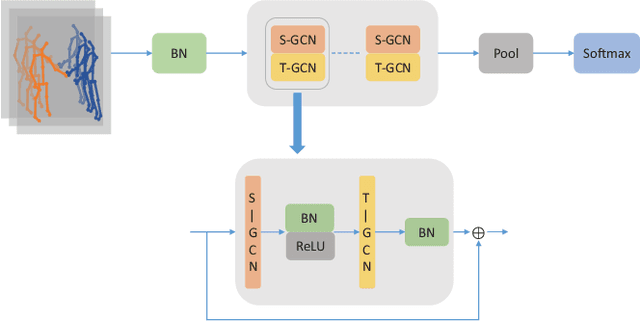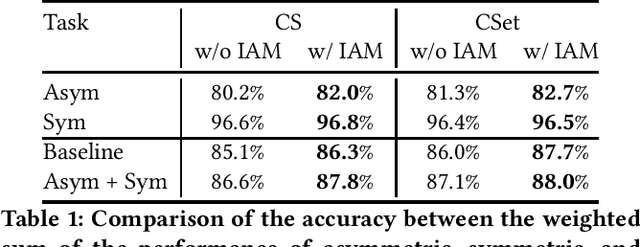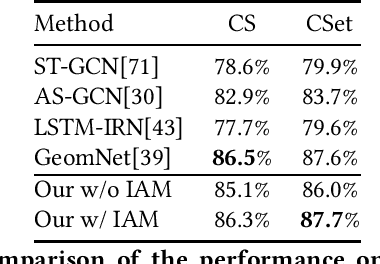Na Zhang
Underwater target 6D State Estimation via UUV Attitude Enhance Observability
Jun 16, 2025Abstract:Accurate relative state observation of Unmanned Underwater Vehicles (UUVs) for tracking uncooperative targets remains a significant challenge due to the absence of GPS, complex underwater dynamics, and sensor limitations. Existing localization approaches rely on either global positioning infrastructure or multi-UUV collaboration, both of which are impractical for a single UUV operating in large or unknown environments. To address this, we propose a novel persistent relative 6D state estimation framework that enables a single UUV to estimate its relative motion to a non-cooperative target using only successive noisy range measurements from two monostatic sonar sensors. Our key contribution is an observability-enhanced attitude control strategy, which optimally adjusts the UUV's orientation to improve the observability of relative state estimation using a Kalman filter, effectively mitigating the impact of sensor noise and drift accumulation. Additionally, we introduce a rigorously proven Lyapunov-based tracking control strategy that guarantees long-term stability by ensuring that the UUV maintains an optimal measurement range, preventing localization errors from diverging over time. Through theoretical analysis and simulations, we demonstrate that our method significantly improves 6D relative state estimation accuracy and robustness compared to conventional approaches. This work provides a scalable, infrastructure-free solution for UUVs tracking uncooperative targets underwater.
Consistency-aware Fake Videos Detection on Short Video Platforms
Apr 30, 2025Abstract:This paper focuses to detect the fake news on the short video platforms. While significant research efforts have been devoted to this task with notable progress in recent years, current detection accuracy remains suboptimal due to the rapid evolution of content manipulation and generation technologies. Existing approaches typically employ a cross-modal fusion strategy that directly combines raw video data with metadata inputs before applying a classification layer. However, our empirical observations reveal a critical oversight: manipulated content frequently exhibits inter-modal inconsistencies that could serve as valuable discriminative features, yet remain underutilized in contemporary detection frameworks. Motivated by this insight, we propose a novel detection paradigm that explicitly identifies and leverages cross-modal contradictions as discriminative cues. Our approach consists of two core modules: Cross-modal Consistency Learning (CMCL) and Multi-modal Collaborative Diagnosis (MMCD). CMCL includes Pseudo-label Generation (PLG) and Cross-modal Consistency Diagnosis (CMCD). In PLG, a Multimodal Large Language Model is used to generate pseudo-labels for evaluating cross-modal semantic consistency. Then, CMCD extracts [CLS] tokens and computes cosine loss to quantify cross-modal inconsistencies. MMCD further integrates multimodal features through Multimodal Feature Fusion (MFF) and Probability Scores Fusion (PSF). MFF employs a co-attention mechanism to enhance semantic interactions across different modalities, while a Transformer is utilized for comprehensive feature fusion. Meanwhile, PSF further integrates the fake news probability scores obtained in the previous step. Extensive experiments on established benchmarks (FakeSV and FakeTT) demonstrate our model exhibits outstanding performance in Fake videos detection.
Stably unactivated neurons in ReLU neural networks
Dec 06, 2024Abstract:The choice of architecture of a neural network influences which functions will be realizable by that neural network and, as a result, studying the expressiveness of a chosen architecture has received much attention. In ReLU neural networks, the presence of stably unactivated neurons can reduce the network's expressiveness. In this work, we investigate the probability of a neuron in the second hidden layer of such neural networks being stably unactivated when the weights and biases are initialized from symmetric probability distributions. For networks with input dimension $n_0$, we prove that if the first hidden layer has $n_0+1$ neurons then this probability is exactly $\frac{2^{n_0}+1}{4^{n_0+1}}$, and if the first hidden layer has $n_1$ neurons, $n_1 \le n_0$, then the probability is $\frac{1}{2^{n_1+1}}$. Finally, for the case when the first hidden layer has more neurons than $n_0+1$, a conjecture is proposed along with the rationale. Computational evidence is presented to support the conjecture.
IPMix: Label-Preserving Data Augmentation Method for Training Robust Classifiers
Oct 17, 2023



Abstract:Data augmentation has been proven effective for training high-accuracy convolutional neural network classifiers by preventing overfitting. However, building deep neural networks in real-world scenarios requires not only high accuracy on clean data but also robustness when data distributions shift. While prior methods have proposed that there is a trade-off between accuracy and robustness, we propose IPMix, a simple data augmentation approach to improve robustness without hurting clean accuracy. IPMix integrates three levels of data augmentation (image-level, patch-level, and pixel-level) into a coherent and label-preserving technique to increase the diversity of training data with limited computational overhead. To further improve the robustness, IPMix introduces structural complexity at different levels to generate more diverse images and adopts the random mixing method for multi-scale information fusion. Experiments demonstrate that IPMix outperforms state-of-the-art corruption robustness on CIFAR-C and ImageNet-C. In addition, we show that IPMix also significantly improves the other safety measures, including robustness to adversarial perturbations, calibration, prediction consistency, and anomaly detection, achieving state-of-the-art or comparable results on several benchmarks, including ImageNet-R, ImageNet-A, and ImageNet-O.
Evaluating the Generation Capabilities of Large Chinese Language Models
Aug 11, 2023


Abstract:This paper presents CG-Eval, the first comprehensive evaluation of the generation capabilities of large Chinese language models across a wide range of academic disciplines. The models' performance was assessed based on their ability to generate accurate and relevant responses to different types of questions in six disciplines, namely, Science and Engineering, Humanities and Social Sciences, Mathematical Calculations, Medical Practitioner Qualification Examination, Judicial Examination, and Certified Public Accountant Examination. This paper also presents Gscore, a composite index derived from the weighted sum of multiple metrics to measure the quality of model's generation against a reference. The test data and test results can be found at http://cgeval.besteasy.com/.
Face Image Quality Enhancement Study for Face Recognition
Jul 08, 2023Abstract:Unconstrained face recognition is an active research area among computer vision and biometric researchers for many years now. Still the problem of face recognition in low quality photos has not been well-studied so far. In this paper, we explore the face recognition performance on low quality photos, and we try to improve the accuracy in dealing with low quality face images. We assemble a large database with low quality photos, and examine the performance of face recognition algorithms for three different quality sets. Using state-of-the-art facial image enhancement approaches, we explore the face recognition performance for the enhanced face images. To perform this without experimental bias, we have developed a new protocol for recognition with low quality face photos and validate the performance experimentally. Our designed protocol for face recognition with low quality face images can be useful to other researchers. Moreover, experiment results show some of the challenging aspects of this problem.
Facial Landmark Detection Evaluation on MOBIO Database
Jul 06, 2023



Abstract:MOBIO is a bi-modal database that was captured almost exclusively on mobile phones. It aims to improve research into deploying biometric techniques to mobile devices. Research has been shown that face and speaker recognition can be performed in a mobile environment. Facial landmark localization aims at finding the coordinates of a set of pre-defined key points for 2D face images. A facial landmark usually has specific semantic meaning, e.g. nose tip or eye centre, which provides rich geometric information for other face analysis tasks such as face recognition, emotion estimation and 3D face reconstruction. Pretty much facial landmark detection methods adopt still face databases, such as 300W, AFW, AFLW, or COFW, for evaluation, but seldomly use mobile data. Our work is first to perform facial landmark detection evaluation on the mobile still data, i.e., face images from MOBIO database. About 20,600 face images have been extracted from this audio-visual database and manually labeled with 22 landmarks as the groundtruth. Several state-of-the-art facial landmark detection methods are adopted to evaluate their performance on these data. The result shows that the data from MOBIO database is pretty challenging. This database can be a new challenging one for facial landmark detection evaluation.
A Study on the Impact of Face Image Quality on Face Recognition in the Wild
Jul 05, 2023Abstract:Deep learning has received increasing interests in face recognition recently. Large quantities of deep learning methods have been proposed to handle various problems appeared in face recognition. Quite a lot deep methods claimed that they have gained or even surpassed human-level face verification performance in certain databases. As we know, face image quality poses a great challenge to traditional face recognition methods, e.g. model-driven methods with hand-crafted features. However, a little research focus on the impact of face image quality on deep learning methods, and even human performance. Therefore, we raise a question: Is face image quality still one of the challenges for deep learning based face recognition, especially in unconstrained condition. Based on this, we further investigate this problem on human level. In this paper, we partition face images into three different quality sets to evaluate the performance of deep learning methods on cross-quality face images in the wild, and then design a human face verification experiment on these cross-quality data. The result indicates that quality issue still needs to be studied thoroughly in deep learning, human own better capability in building the relations between different face images with large quality gaps, and saying deep learning method surpasses human-level is too optimistic.
Video-based Contrastive Learning on Decision Trees: from Action Recognition to Autism Diagnosis
Apr 21, 2023



Abstract:How can we teach a computer to recognize 10,000 different actions? Deep learning has evolved from supervised and unsupervised to self-supervised approaches. In this paper, we present a new contrastive learning-based framework for decision tree-based classification of actions, including human-human interactions (HHI) and human-object interactions (HOI). The key idea is to translate the original multi-class action recognition into a series of binary classification tasks on a pre-constructed decision tree. Under the new framework of contrastive learning, we present the design of an interaction adjacent matrix (IAM) with skeleton graphs as the backbone for modeling various action-related attributes such as periodicity and symmetry. Through the construction of various pretext tasks, we obtain a series of binary classification nodes on the decision tree that can be combined to support higher-level recognition tasks. Experimental justification for the potential of our approach in real-world applications ranges from interaction recognition to symmetry detection. In particular, we have demonstrated the promising performance of video-based autism spectrum disorder (ASD) diagnosis on the CalTech interview video database.
MorphGANFormer: Transformer-based Face Morphing and De-Morphing
Feb 18, 2023



Abstract:Semantic face image manipulation has received increasing attention in recent years. StyleGAN-based approaches to face morphing are among the leading techniques; however, they often suffer from noticeable blurring and artifacts as a result of the uniform attention in the latent feature space. In this paper, we propose to develop a transformer-based alternative to face morphing and demonstrate its superiority to StyleGAN-based methods. Our contributions are threefold. First, inspired by GANformer, we introduce a bipartite structure to exploit long-range interactions in face images for iterative propagation of information from latent variables to salient facial features. Special loss functions are designed to support the optimization of face morphing. Second, we extend the study of transformer-based face morphing to demorphing by presenting an effective defense strategy with access to a reference image using the same generator of MorphGANFormer. Such demorphing is conceptually similar to unmixing of hyperspectral images but operates in the latent (instead of pixel) space. Third, for the first time, we address a fundamental issue of vulnerability-detectability trade-off for face morphing studies. It is argued that neither doppelganger norrandom pair selection is optimal, and a Lagrangian multiplier-based approach should be used to achieve an improved trade-off between recognition vulnerability and attack detectability.
 Add to Chrome
Add to Chrome Add to Firefox
Add to Firefox Add to Edge
Add to Edge